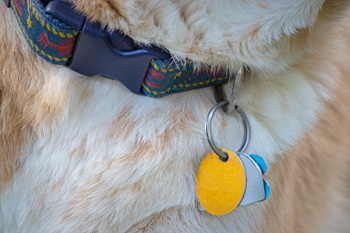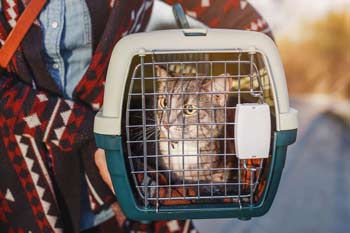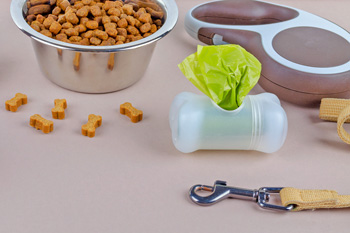Pet Preparedness
- Get Prepared
- General Safety
- Current: Pet Preparedness
June is Pet Preparedness Month for the United States.
Disasters impact every household member, including pets. The Indiana State Board of Animal Health reports that about 5 percent of people do not evacuate during disasters because they cannot leave with their pets. Whether taking pets along during an evacuation or choosing to leave them at home, have a disaster kit tailored for pets to help keep everyone safe in an emergency.
Pet Preparedness Tips
Quick Tips
- Create a disaster kit with pet supplies.
- If evacuating with a pet, do so early.
- If unable to evacuate with a pet, leave enough dry food and fresh water to last at least three days.

Before a Disaster
- Confirm potential evacuation locations that allow animals.
- Maintain reliable identification and current photos on each pet.
- Practice the evacuation plan with each pet for a better understanding of how they will react.
- Create a disaster kit with pet supplies.

Evacuating With a Pet
During times of a disaster, it may or may not be possible to evacuate with a pet. If evacuating with a pet is possible, follow these steps to be prepared:
- If possible, evacuate pets early.
- Call ahead to make a reservation at the chosen evacuation spot.
- Keep areas clean and sterilized to prevent the potential spread of illness.
- Keep pets separated from unknown animals and people to prevent stress-related aggression.

Keeping Pets Safe at Home
When evacuating with a pet is not possible, follow these steps to keep animals safer when they must stay behind:
- Create a buddy system and ask neighbors to check on the animals.
- Do not leave vitamin treats, which can be fatal if overeaten.
- In case of a lost pet, contact the area kennels, boarding shelters, humane shelters and veterinary hospitals.
- Leave animals in rooms without windows.
- Leave enough dry food and fresh water to last at least three days.
- Maintain reliable identification on each pet.
- Never leave animals outdoors where they are vulnerable to the weather and can escape.

Disaster Kit Items
Family disaster kits should contain items for pets, or a kit should be made specifically for them. Here are a few items to include in either kit:
- Bedding
- Cat litter and litter pan
- Cleaning supplies for accidents (paper towels, disinfectant)
- Collar, leash and harness
- Current photos
- Dry food and water for at least three days
- Food and water bowls
- List of veterinarian clinic, veterinary hospitals and kennel phone numbers
- Medications, including flea/tick and heartworm preventatives
- Pet carrier
- Plastic bags for waste
- Vaccination records
Resources
Websites
- Disaster Preparedness Overview
Indiana State Board of Animal Health - Pet Safety in Emergencies
U.S. Centers for Disease Control and Prevention - Pets and Animals
Ready.gov
